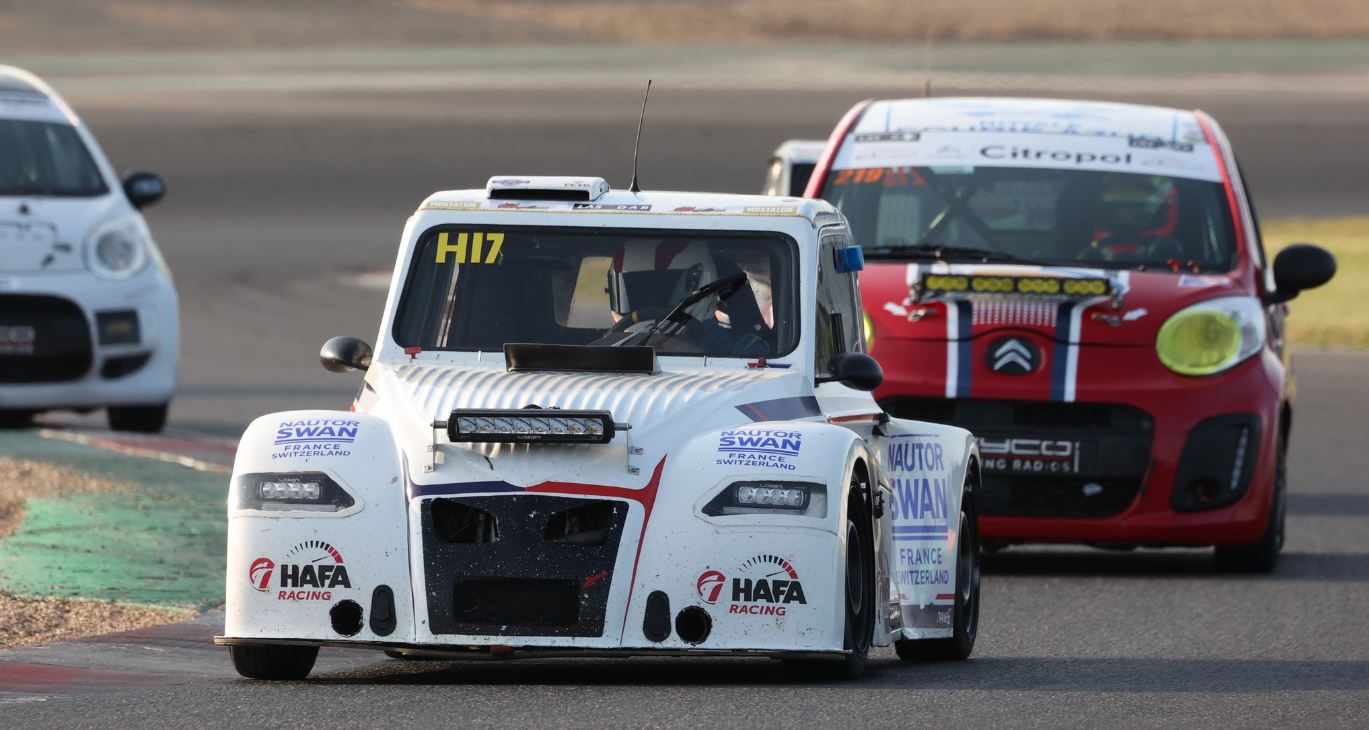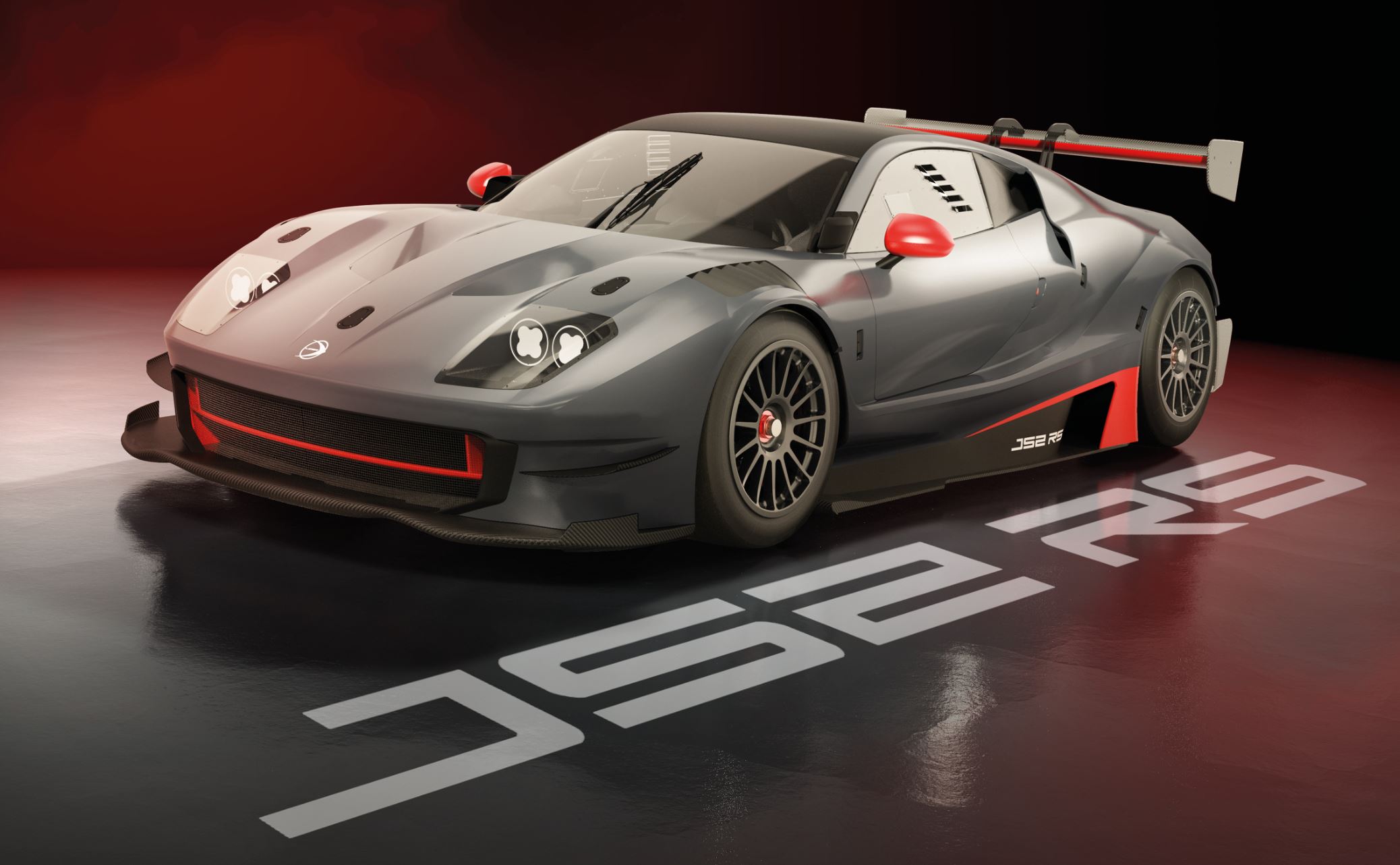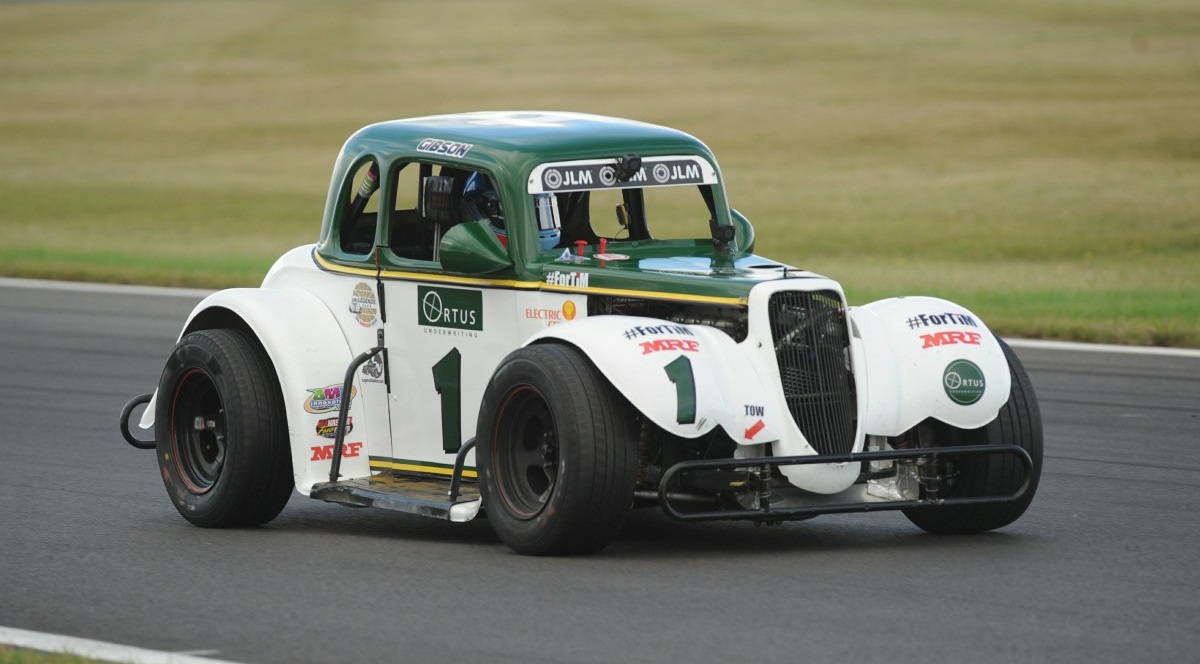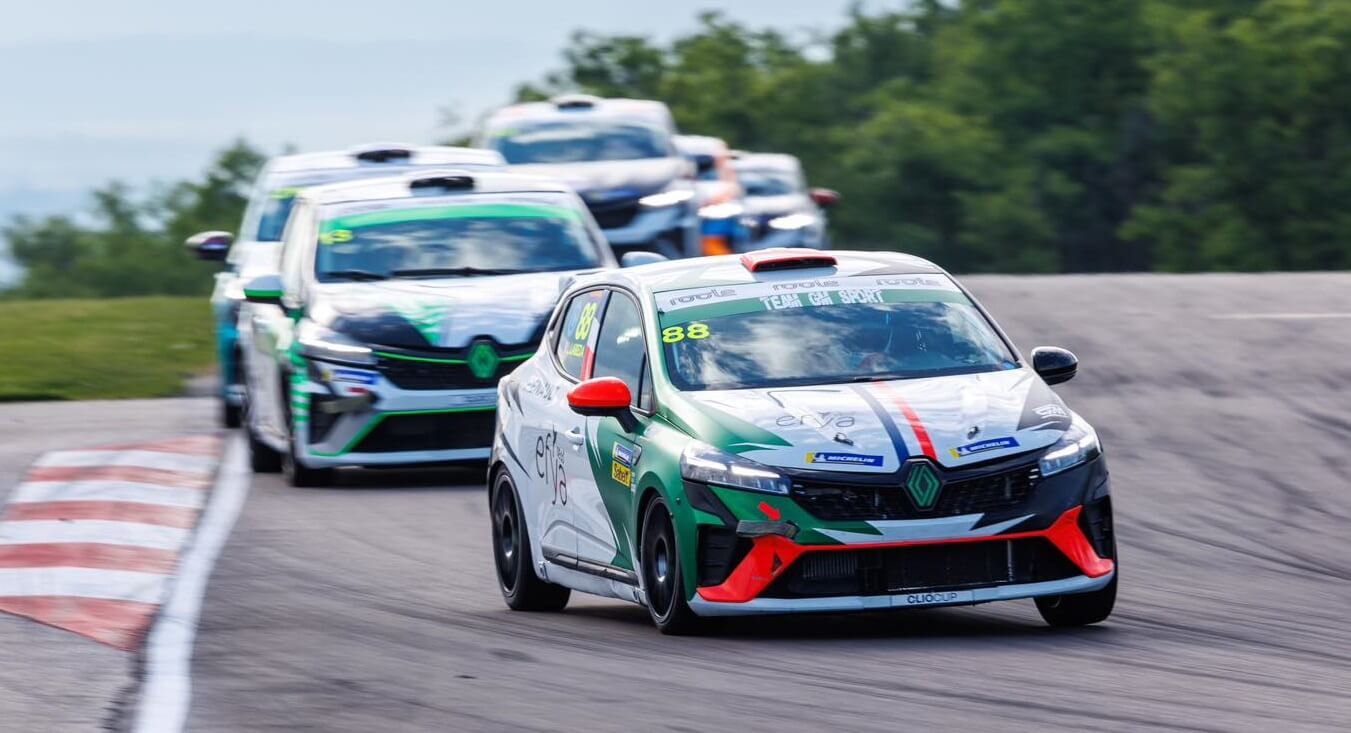2CV/C1 Racing Cup: a unique endurance championship in Belgium
By RobinB on 23 June 2025 Circuit / RaceIn the world of accessible and unique endurance racing, Belgium stands out with a championship like no other: the 2CV/C1 Racing Cup. A competition where the iconic Citroën 2CV shares the track with the modern Citroën C1—all in an atmosphere that blends passion, performance, and camaraderie. Let’s look back at the origins and evolution of this now iconic discipline! 🥳
History and Development of the 2CV/C1 Racing Cup Championship
The 2CV/C1 Racing Cup championship has its roots in the 1980s, with the organization of the first endurance races dedicated to the famous Citroën 2CV and Dyane (📸 see photo below).
The very first edition of the 24 Hours of 2CV at Spa-Francorchamps took place in 1985, quickly becoming the go-to event for fans of 2CV racing. At the time, a few passionate and handy enthusiasts dove into the adventure with junkyard-rescued 2CVs, simply fitted with a roll cage, harness, kill switch, and bucket seat. Driving them was demanding and sporty despite the simplicity of the car, offering unique sensations—especially in Spa’s legendary corners like the Double Left, where the particularly soft suspension required vigorous steering input 💪
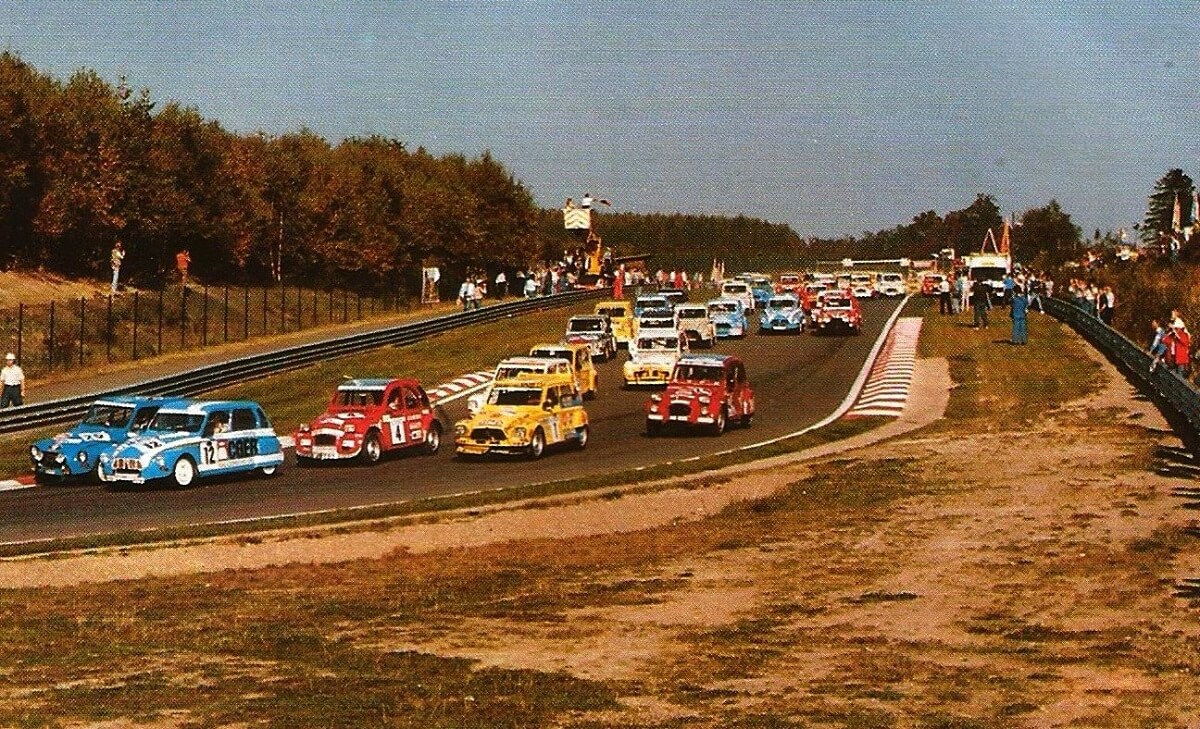
Over the years, these souped-up 2CVs have turned into real race machines thanks to the ingenuity and competitive spirit of the teams. As these events gained popularity, a fully structured endurance championship emerged in the early 2000s, with races held in Belgium, France, and the Netherlands, alongside the emblematic 24H of Spa-Francorchamps 😍
In response to rising organizational costs and the need to refresh the grid, Belgian promoter 2CV Racing Teams introduced a new category in 2017: the C1 Racing Cup. Directly inspired by the immediate success of the British C1 Racing Club launched that same year, this new category offers a cost-effective alternative, helping maintain the championship’s appeal and long-term viability 👍
See also: "CityCar Cup: England has found the right formula (again)"
So, starting in 2017, modern Citroën C1s joined the 2CVs, with a separate classification to preserve the historic identity of the championship. From its first Belgian season, the C1 category brought together around fifteen cars—a number that has been steadily increasing since 📈
ℹ️ Today, the C1s actually make up the majority of the grid, underlining their growing success. They now share the track with the legendary 2CVs at all championship events, striking a fine balance between tradition and modernity.
The spirit of the championship remains friendly and passionate, described as “an affordable and fun formula, open to both novices and experienced drivers.” Each edition of the 24 Hours of Spa has become a true festival, bringing together international crews in a warm atmosphere where serious racing and camaraderie go hand in hand—uniting the big family of “Deuchistes” around their beloved car 🚗

The Cars on Track: The Legendary Citroën 2CV
While the idea of racing a 2CV might sound amusing at first, it’s worth pointing out that these vehicles, despite their small engine size and quirky design, offer truly fun and sporty sensations. Competition 2CVs have evolved significantly, going from junkyard finds to full-on race machines—often entirely rebuilt with reinforced, welded, and lightweight components 🔥
The Categories of the 2CV Racing Cup
Today, four main categories structure the 2CV Racing Cup in Belgium: Classics, Improved, Prototypes, and Hybrids. Each category allows for a different level of mechanical and technical preparation, catering to a range of budgets and sporting ambitions.
Other more marginal classes also exist in the rulebook, such as the Experimental (X) and Guest (G) categories, which allow for prototype vehicles or cars from other European championships.
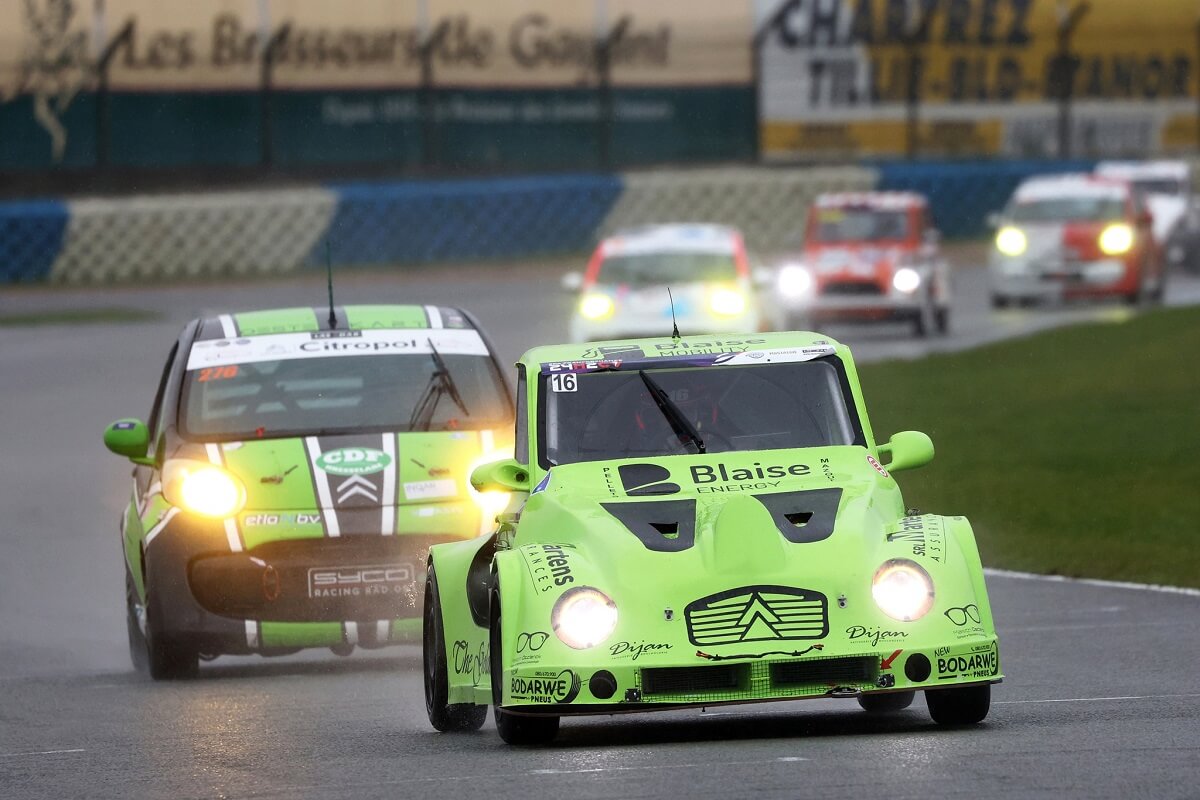
An Engine Evolution in the Works: Toward a 1200 cc BMW for the Hybrid Category?
Since 2024, the 2CV Racing Teams promoter has been quietly running an ambitious testing program aimed at further improving the reliability of Hybrid 2CVs. Under the hood is still a BMW twin-cylinder… but this time in a 1150 cc version, derived from the R 1150 block. This engine is an evolution of the original 850 cc engine used in the top category.
The goal of this evolution is mainly to increase engine torque without raising top speed, allowing for better corner-exit acceleration and improved reliability during long runs, especially in 24-hour races. Contrary to what one might think, engine RPM remains limited and cornering speed is virtually unchanged. The objective is to make the engine more reliable while maintaining the balance between performance and cost ⚖️
These tests pave the way for a potential rule update: 2CVRT is now considering introducing a 1200 cc BMW engine by 2026. This 1200 cc engine would mark a new step, aiming to offer even more reliability and torque, without drastically altering overall performance. The 1200 cc engine is seen as a continuation of the 1150 cc version, offering more robustness and adaptability—but whether this evolution will actually be implemented remains to be seen. Introducing a 1200 cc engine could further optimize Hybrid 2CV performance without fundamentally changing the championship’s competitive balance.
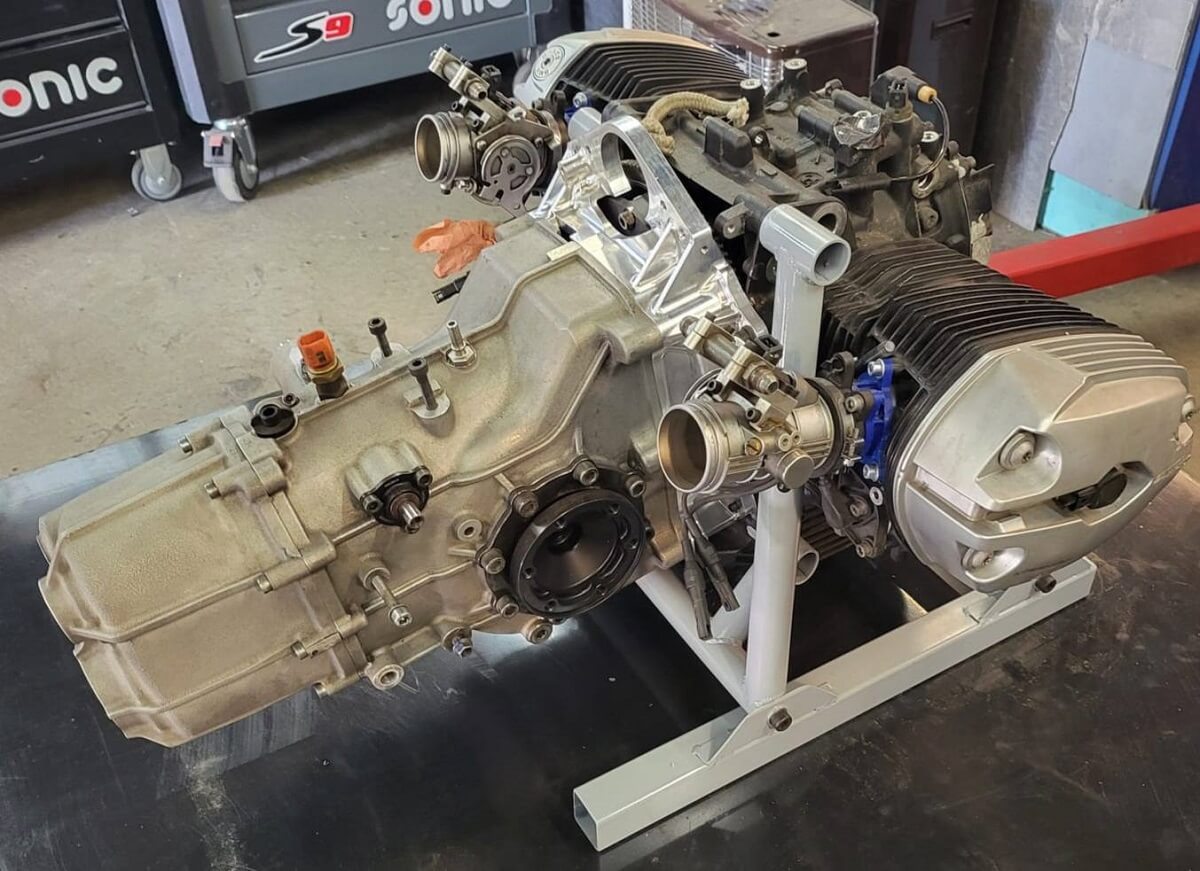
ℹ️ Some competitors have expressed dissatisfaction with this evolution, believing it could lead to additional costs and make previous investments in 850 cc engines obsolete. They fear having to adapt their cars and budgets once again to a constantly changing rulebook, without prior consultation. Several drivers are even considering leaving the championship, especially small teams already financially strained 😞
The British Case: A Minimalist Philosophy That Endures
Across the Channel, the British 2CV Championship has been organized since 1989 by the 2CV Racing Club, born from the enthusiasm of a small group of fans who returned amazed from a trip to the 24 Hours of Spa. The very next year, they launched their own series by adapting the 2CV Cross regulations, with a first race held at Mallory Park already drawing 22 cars to the grid 😲
Since then, the club’s philosophy has remained true to its roots: cars as close as possible to stock, with a strictly original 602 cc engine (around 40 horsepower), and no modifications to the bodywork or major components. Preparation is minimal, costs are low, and accessibility is maximal. This model has appealed to a wide audience, attracting beginner drivers, gentlemen drivers, and even a few well-known names like Ian Flux or Paddy Hopkirk.
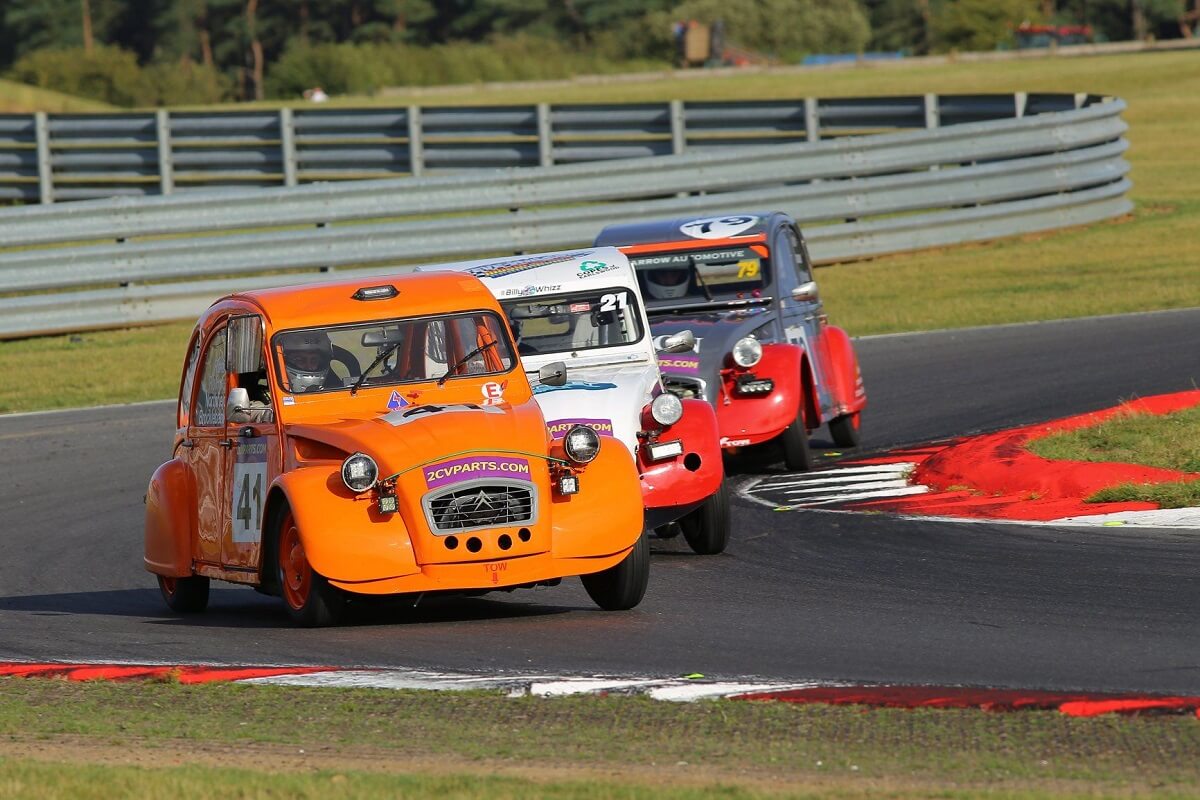
The discipline has grown in popularity thanks to its unique formats, including a 24-hour race that was long held in Ireland at Mondello Park, before moving to Snetterton and later to Anglesey. Even today, British championship races are known for their light-hearted spirit, economic accessibility… and often very close on-track battles. All in a family-friendly atmosphere that stays true to the DNA of the 2CV 🙂
The Citroën C1 Racing Cup: Modernity and Accessibility
Alongside the historic 2CVs, the Citroën C1 Racing Cup offers a more modern entry point into the championship. Introduced in Belgium in 2017, this category aims to provide a uniform, simple, and budget-friendly format, perfectly suited for beginner drivers as well as teams looking for an affordable circuit racing program 👌
The car used is a first-generation Citroën C1 (2005–2014), equipped with the 1.0 VTi three-cylinder petrol engine producing 68 hp in stock form. To ensure technical equality between competitors and keep costs under control, modifications are strictly regulated by an official Cup kit, approved by the RACB and sold by the company C1 Racing Teams.
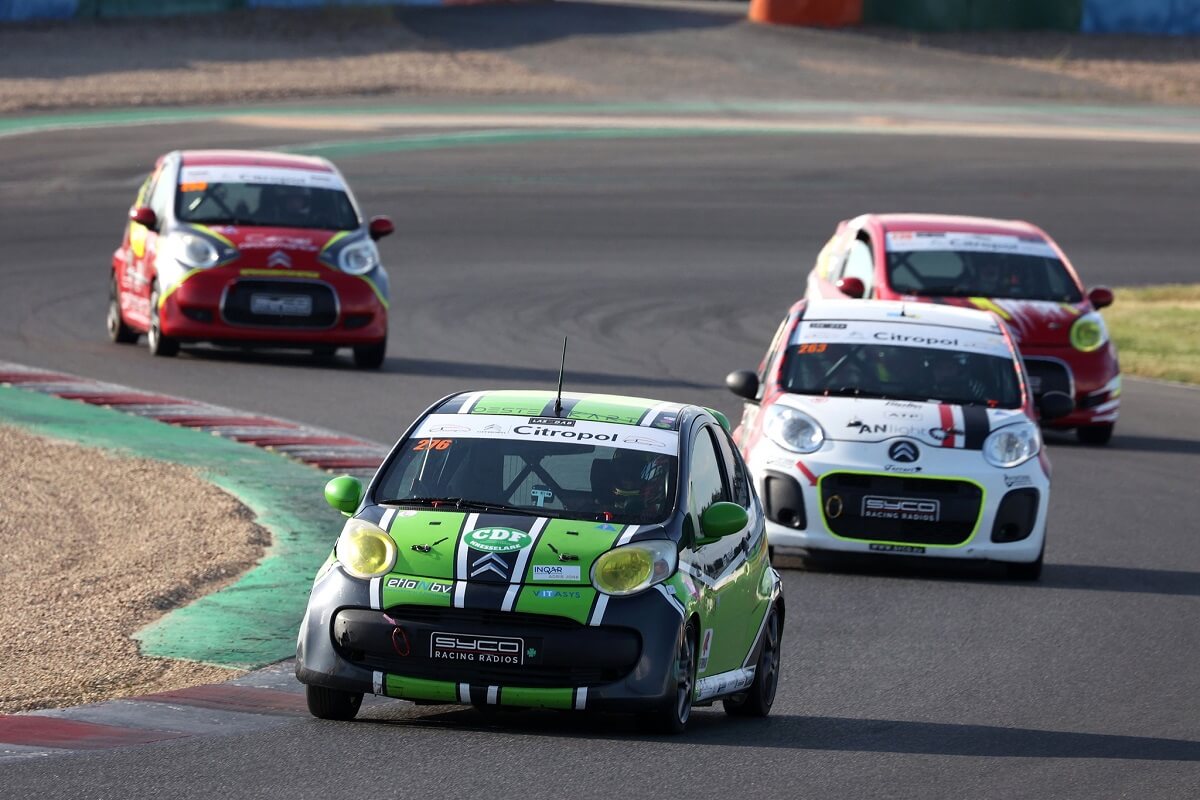
This kit, priced at €8,550 excl. VAT (approximately €10,340 incl. VAT), includes all the components needed to turn the little city car into a real race car, ready to tackle an endurance event. It includes, notably:
- A full FIA-homologated safety roll cage (compliant with Appendix J),
- Adjustable racing suspension,
- A complete stainless steel exhaust line (header, center pipe, silencer),
- A sport air intake with INJEN filter,
- An ECU remap, sealed to ensure fairness,
- Upgraded brakes: vented/drilled front discs, Ferodo DS3000 pads, Ferodo 2500 rear shoes, braided brake lines,
- A roof spoiler, strut bar, and all the mounting hardware for bucket seat, FIA 6-point harness, tulip steering wheel, kill switch, FIA mechanical extinguisher, etc.
Once installed, this kit transforms the city car into a real race machine—rigid, predictable, and built to withstand long hours on track—while maintaining contained and beginner-friendly power. The engine keeps its original specs, allowing the C1 to reach a top speed of around 145 km/h, with lap times slightly behind Hybrid or Prototype 2CVs, but comparable to a well-driven Improved 2CV 😋
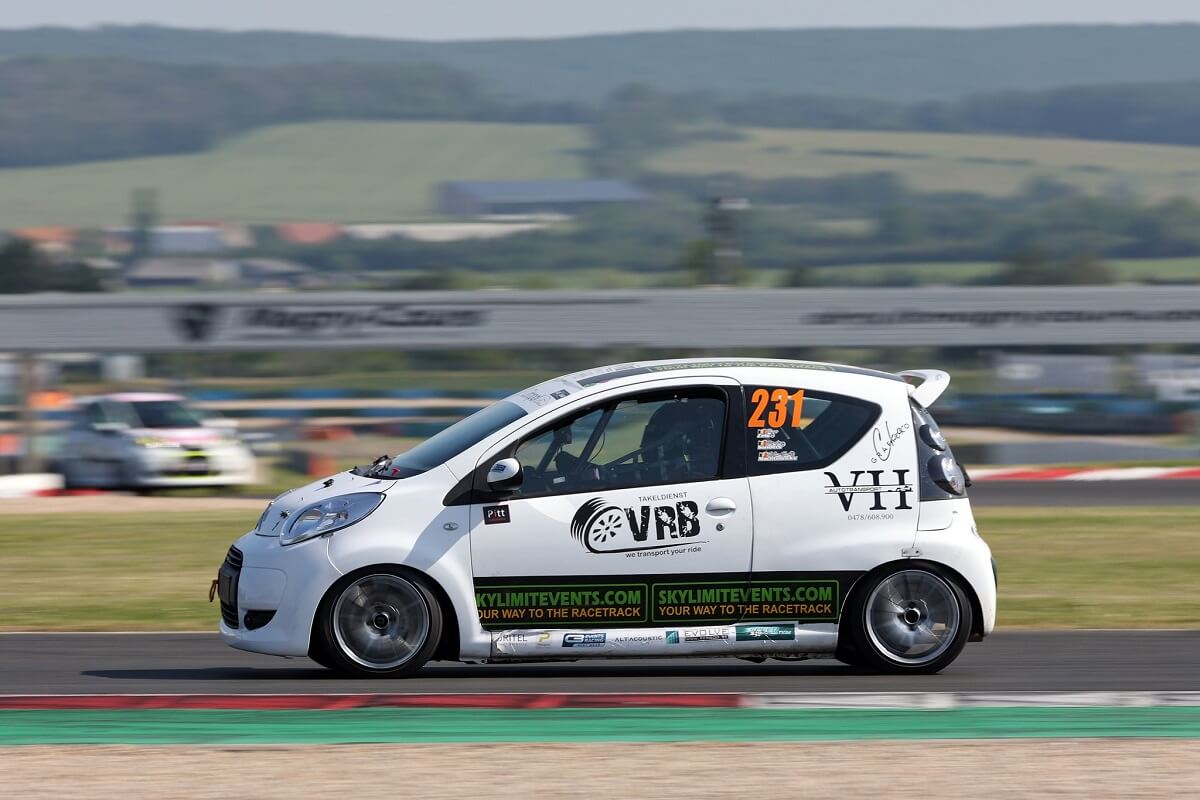
With a minimum curb weight of 850 kg and ZEKNOVA SuperSport DOT/E-approved road tires—chosen for their durability and grip on track—the C1 Racing Cup remains lightweight, but less agile than the most radical 2CVs (especially the Hybrids, which weigh around 600 kg). It makes up for this with excellent reliability, reassuring handling, and moderate tire and brake wear, making it a safe bet for endurance racing 👍
Today, the format is attracting more and more participants: C1s now make up the majority of the grid, especially during the 24 Hours of Spa, where more than 70 often line up at the start. This growth reflects the success of the C1 philosophy: a modern car, easy to build, cheap to maintain, and fun to drive—all within a regulated framework that keeps runaway costs in check 💰
For many, the C1 Racing Cup thus represents a modern and balanced alternative to the 2CV: less quirky, perhaps, but just as friendly and educational—especially for those looking to start racing without diving straight into the specific mechanics of vintage cars.
➡️ See all Citroën race car listings on GoToTheGrid 😋
📅 2025 Season Calendar
The 2025 season of the 2CV/C1 Racing Cup is structured around five major events, mostly endurance races lasting from 6 to 24 hours, held between spring and late autumn:
- 5–6 April 2025 – Circuit Zolder (Belgium): Season-opening 7-hour race (the traditional season-opening “7H of Zolder”).
- 29–31 May 2025 – Circuit de Nevers Magny-Cours (France): Two 6-hour races, a brand-new format replacing the previous 24H spring race. Teams will compete in one 6-hour race on Saturday and a second on Sunday.
- 28–29 June 2025 – Anneau du Rhin (France): An 8-hour round at this technical Alsatian circuit, a new addition to the calendar.
- 17–19 October 2025 – Spa-Francorchamps (Belgium): The 24H 2CV/C1 of Spa, the season’s highlight, held on the legendary Ardennes rollercoaster. This will be the 41st edition of this double-day classic, which often draws more than 110 cars to the grid.
- 22–23 November 2025 – Croix-en-Ternois (France): Season finale with two 6-hour races on the small northern circuit, including one night race to wrap up the year.
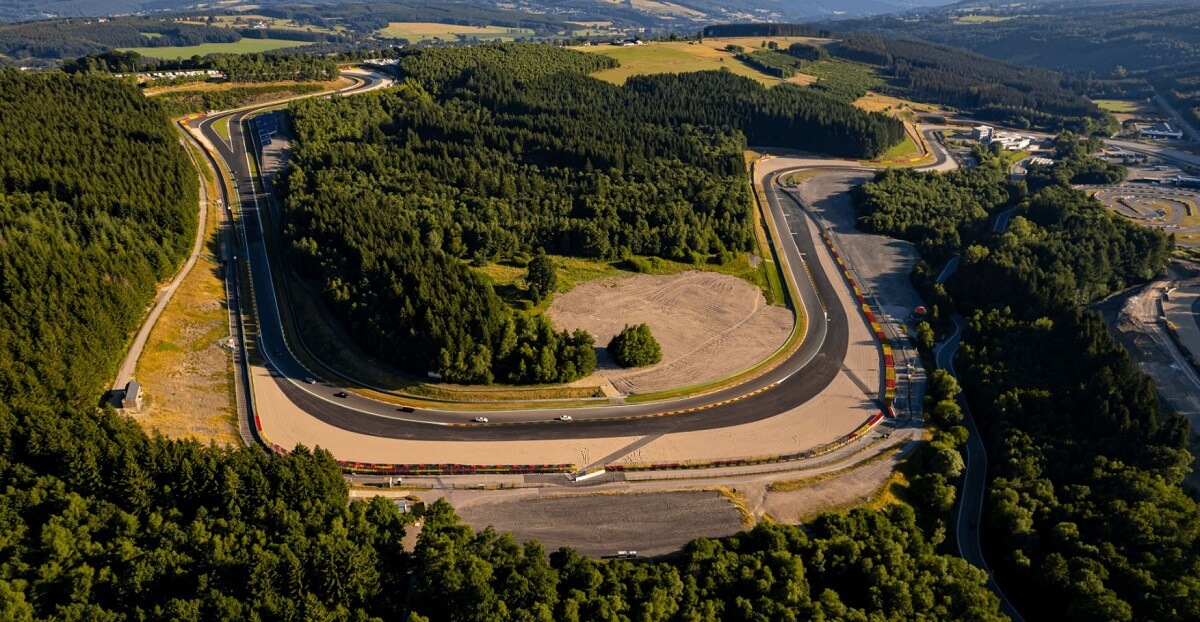
The 2025 calendar alternates between medium-length events (6–8h) and the grand adventure of the 24 Hours. Notably, the Magny-Cours round adopts a split format over two half-days of racing, which gives Spa back its status as the only 24H event of the year—and the longest distance to cover. Between these events, test and track days are also offered (for example, an official Test Day was scheduled on 6 August 2025 at Croix-en-Ternois). A varied calendar that takes the championship from Belgium to France, and sometimes to the Netherlands (past editions have visited Zandvoort or Mettet). The Spa 24H2CV remains the undisputed crown jewel, held on the legendary Spa-Francorchamps circuit, where vintage Deuches and sharp-looking C1s face off each year in a one-of-a-kind endurance challenge 🎉
[VIDEO] Onboard Camera in 2CV Racing Cup at the 2021 Spa 24H 💪
Budget and Costs for Participants
One of the major advantages of the 2CV/C1 Racing Cup is its financial accessibility. Compared to most circuit racing disciplines, this series remains one of the most affordable, with a total budget far lower than series like the Fun Cup or more modern one-make series like the Clio Cup Series 💸
Buying or Building the Car
ℹ️ There are no “ready-to-race” cars sold new by an official manufacturer. Each car entered is either the result of a conversion from a production model or bought second-hand, already built to comply with the current technical regulations.
Prices for Buying a 2CV Racing Cup Car
The budget depends heavily on the target category. For a Classic or Improved 2CV, it is still possible to find decent used cars between €5,000 and €8,000, ready to race without major work. On the other hand, Prototype or Hybrid category 2CVs often exceed €20,000, especially if equipped with a well-prepared BMW engine or a sequential gearbox. These high-performance versions are also the most sought-after, which—combined with limited market supply—can make buying one a challenge.
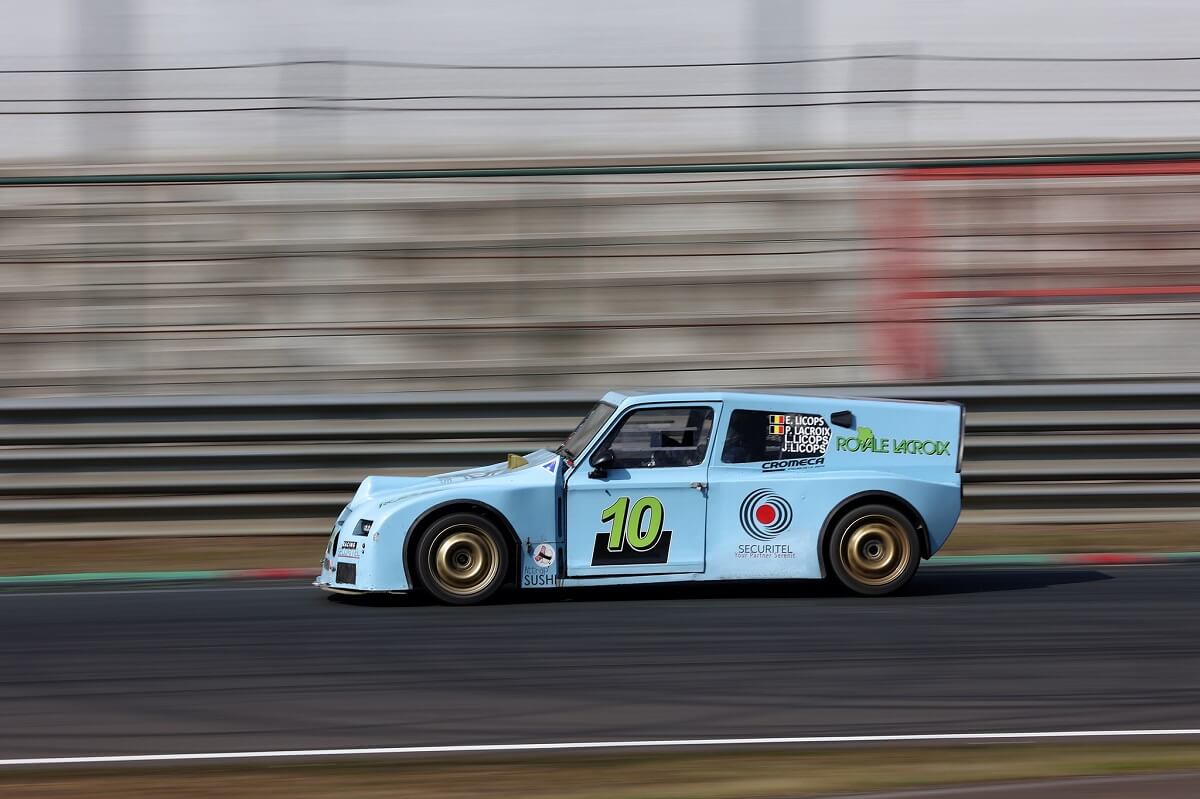
Prices for Buying a Citroën C1 Racing Cup Car
The market is more active, with many cars available for resale. A ready-to-race C1 currently sells for between €10,000 and €15,000 depending on overall condition, build quality, and included parts. It’s also possible to build your own car: simply buy a production C1 (1.0 VTi version produced between 2005 and 2014), then install the official Cup kit, sold for €8,550 excl. VAT (approximately €10,340 incl. VAT). This can be assembled by a professional or by yourself, as long as you strictly follow the technical regulations 🛠️
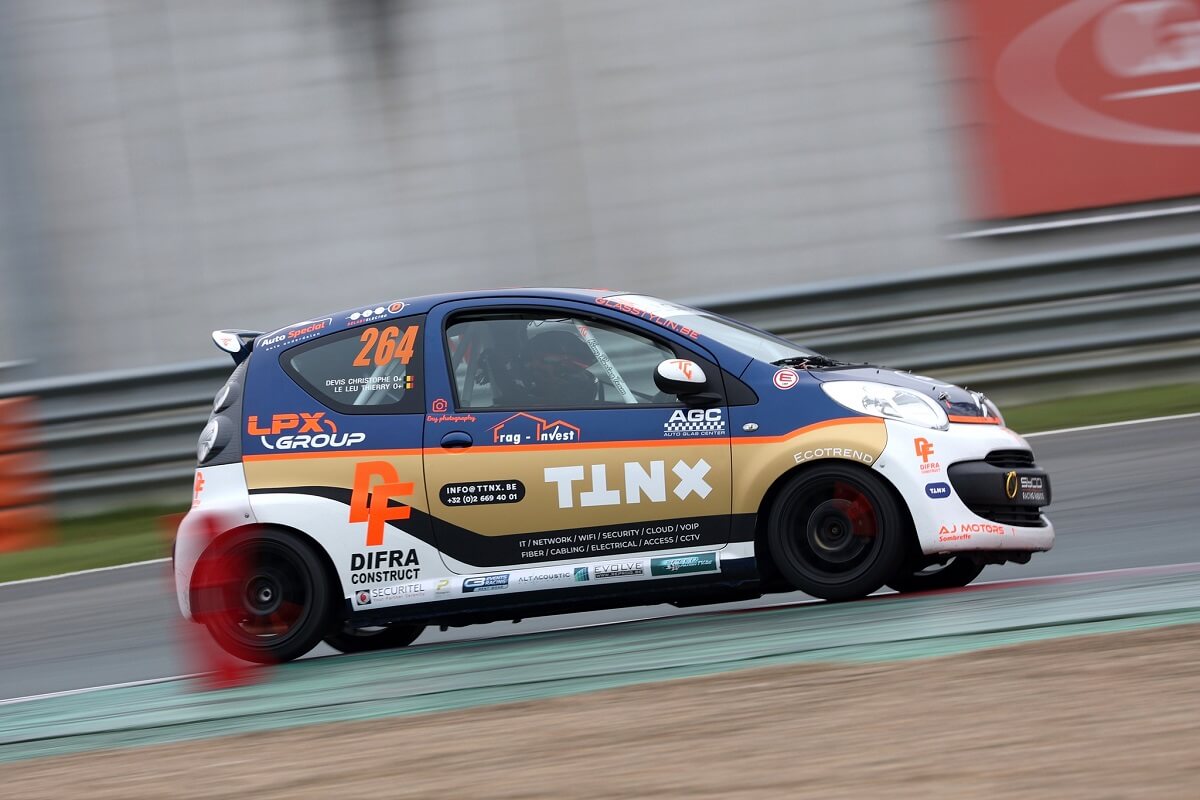
💶 Entry Fees per Race
Entry fees are set per event and vary depending on the race duration and the circuit. Here are the 2025 rates (incl. VAT) communicated by the Belgian organization:
That brings the total to €15,600 for entry fees across a full season, to be shared among team members (typically 2 to 4 drivers for short races, 4 to 6 for the 24H).
This amount covers only the entry fees paid to the organizer. It does not include other essential costs to compete in a race.
Depending on the team setup, expenses can vary significantly. A self-managed team that owns its car handles maintenance, transport, fuel, tires, and trackside support. This option is more demanding but allows better budget control. Conversely, a driver renting a car from a professional team usually opts for an all-inclusive package. In that case, the price covers rental, entry, mechanical support, consumables, and full logistics. It’s simpler—but inevitably more expensive 😅
2CV/C1 Racing Cup: What Budget for a Seat Rental?
For drivers who prefer to rent a car from a professional team, there are so-called "turnkey" or "Arrive & Drive" packages. These usually include car rental, technical support, entry fees, fuel, tires, and logistics 🔝
For a Citroën C1 Cup, expect around €450 to €500 excl. VAT per hour of track time. A 6-hour race costs about €2,700 to €3,000 excl. VAT, while a 24-hour entry can reach €12,000 excl. VAT. For a five-driver crew, that’s an average budget of about €2,500 excl. VAT per person.

On the 2CV side, the most competitive cars (especially in the Hybrid or Proto categories) rent for a minimum of €600 excl. VAT/hour. A 6-hour race thus costs at least €3,600 excl. VAT, and you should expect up to €14,400 excl. VAT for a 24-hour race.
These packages offer a hassle-free solution with no mechanical or logistical worries. They appeal equally to beginners wanting to discover endurance racing in a safe environment and to experienced drivers seeking simplicity.
A Discipline That’s Both Fun and Affordable… and Truly Endearing
The 2CV/C1 Racing Cup is much more than just a championship: it’s an ideal gateway to endurance racing, on prestigious circuits and in a friendly atmosphere. Whether the goal is to improve, to compete, or simply to live an intense human adventure, this series allows you to combine a passion for motorsport with a manageable budget 😍
Many come to try it… and end up coming back, season after season!

